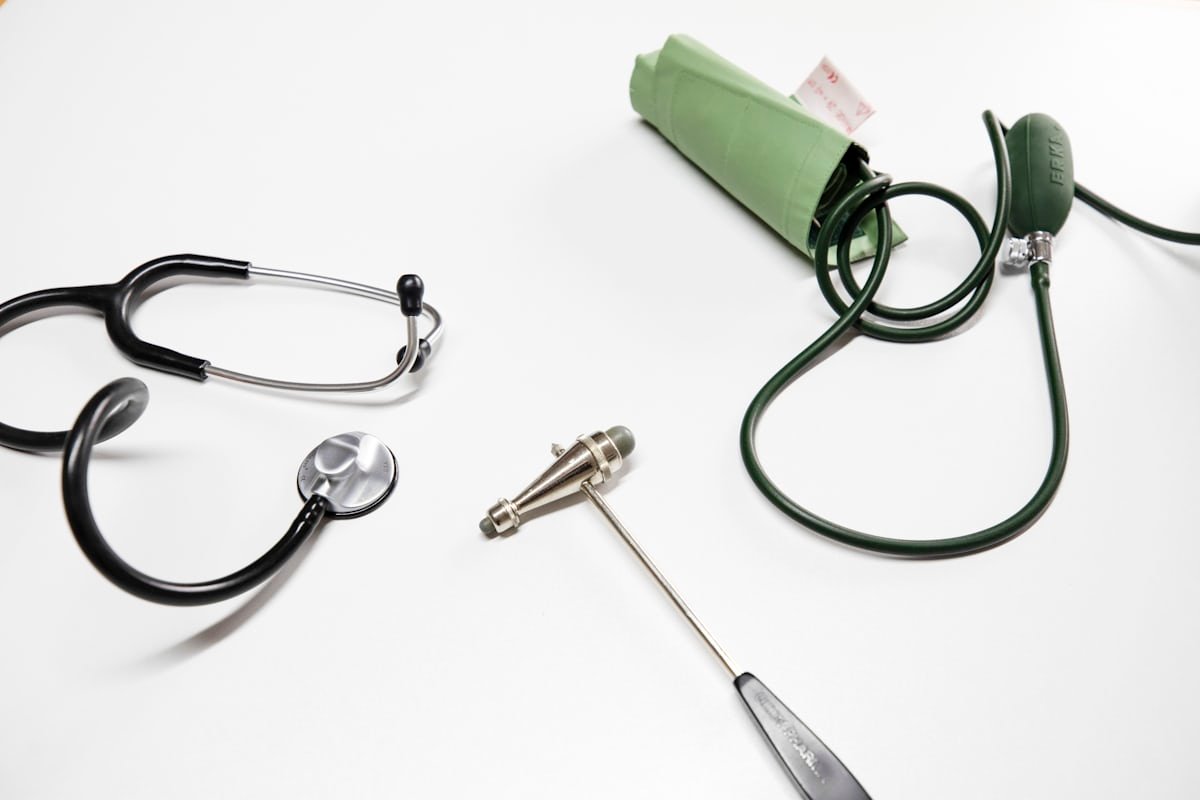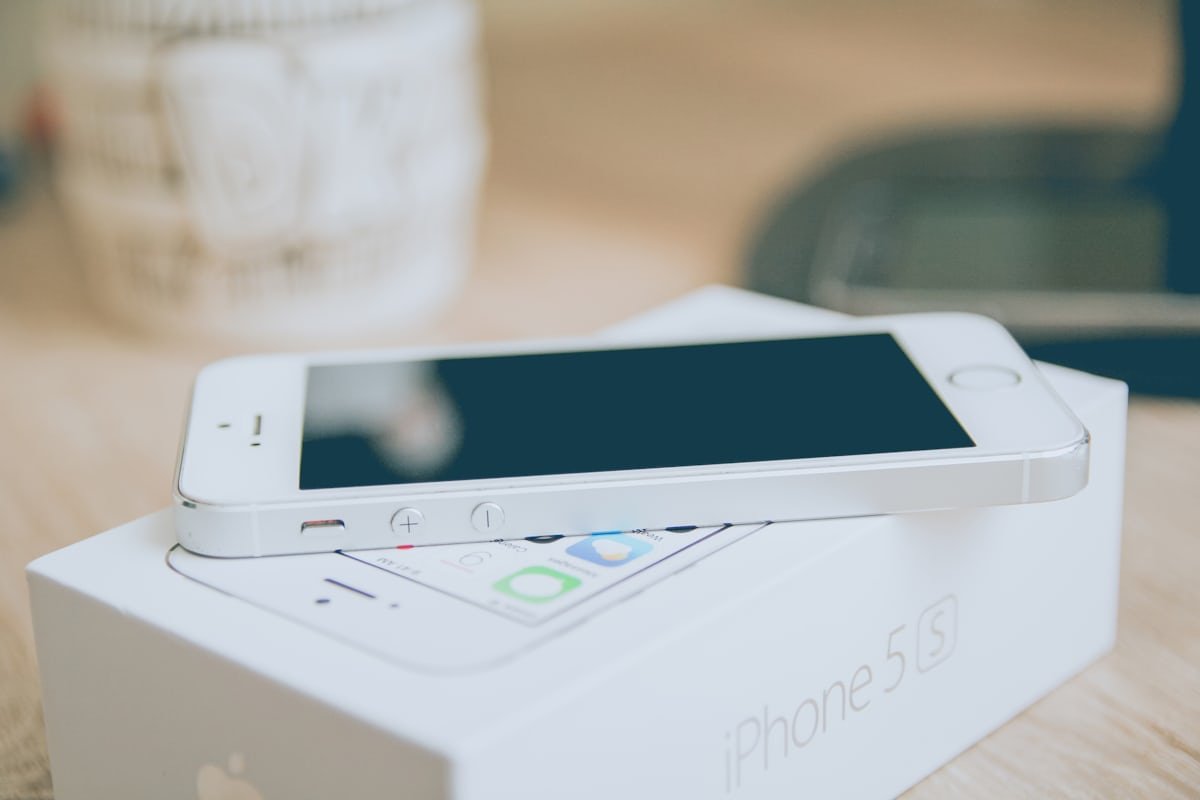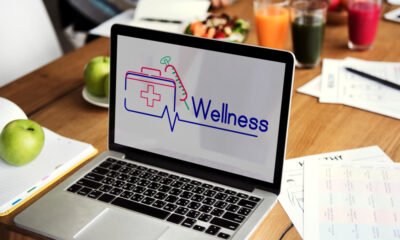Health
Can I Apply Apple Health for Kid? A Parent’s Guide for 2025

As a parent, one of your top priorities is ensuring your child has access to quality healthcare. Many families ask the same essential question: “Can I apply Apple Health for kid?” Fortunately, the answer is a clear yes—if you meet the eligibility requirements. This article provides a comprehensive guide to understanding, applying for, and maximizing Apple Health coverage for your child.
What Is Apple Health?
Apple Health is Washington State’s version of Medicaid, managed by the Health Care Authority (HCA). It offers free or low-cost health coverage for individuals and families who qualify based on income and other factors. Children under the age of 19 can receive coverage through Apple Health for Kids, a sub-program specifically designed for minors.
Who Is Eligible for Apple Health for Kids?
To apply for Apple Health for your child, you need to meet specific eligibility criteria. First, the child must be under the age of 19. Additionally, the family must meet income guidelines set by the state. For many families, even moderate-income households, free or reduced-cost plans are still available.
While citizenship is a factor, children who are undocumented may still qualify for coverage through the Alien Emergency Medical or the Children’s Medical Program. Therefore, it’s always a good idea to apply regardless of immigration status.
How to Apply for Apple Health for Kids
The application process is designed to be simple and user-friendly. There are several ways you can apply:
- Online through Washington Healthplanfinder: This is the fastest method. Create an account and submit your application digitally.
- By Phone: Call the Washington Healthplanfinder Customer Support Center.
- In Person: You can get help from a local navigator or health broker trained in Apple Health applications.
Be prepared to provide necessary documents such as proof of income, identification, and residency.
What Does Apple Health for Kids Cover?
Apple Health provides comprehensive coverage for children, including:
- Doctor visits
- Preventive care and vaccines
- Dental services
- Vision exams and glasses
- Mental health services
- Emergency room visits
- Hospital care
- Prescriptions
This level of coverage ensures that your child receives consistent and reliable healthcare throughout their development.
Important Considerations Before Applying
Before submitting an application, review your household income to determine your potential cost. Many families qualify for completely free coverage, while others may have minimal monthly premiums based on a sliding scale.
Moreover, ensure that your chosen healthcare providers accept Apple Health. Most pediatricians and hospitals in Washington do, but it’s worth confirming in advance to avoid inconvenience later.
Renewing and Maintaining Coverage
After initial approval, Apple Health for Kids coverage lasts for 12 months. The state will notify you when it’s time to renew, and it’s crucial to respond promptly. Failing to renew can result in a lapse of coverage, which may affect your child’s access to services.
To maintain coverage, keep your contact information up to date and report any changes in income or household size as soon as they happen.
Common Questions About Apple Health for Kids
1. Can I apply Apple Health for kid if I already have private health?
Yes, you can. If your income qualifies, Apple Health can supplement your child’s existing coverage.
2. Do both parents need to be residents of Washington?
Only the child needs to reside in Washington to qualify, regardless of the parents’ residency.
3. Can I choose my child’s doctor?
Absolutely. You can select from a wide network of Apple Health-approved providers once enrolled.
Benefits of Applying
Applying for Apple Health for your child ensures peace of mind. You’ll know that preventive care, emergency services, and even long-term treatment plans are within reach. This support not only improves your child’s physical well-being but also enhances their mental and emotional development.
Furthermore, it eliminates the financial stress that comes from unexpected medical bills. With predictable costs—or in many cases, no cost at all—families can focus more on what matters most: their children’s health.
Final Thoughts: Yes, You Can Apply Apple Health for Kid
So, can I apply Apple Health for kid? Absolutely. Whether you’re navigating low income, seeking better healthcare coverage, or simply looking for a safety net, Apple Health for Kids is a program designed to help. By understanding eligibility, following the application steps, and actively managing the plan, you can ensure your child gets the care they deserve.
If you haven’t applied yet, don’t wait. Take the next step and secure your child’s health today.

Health
What Can I Do with a Health Science Degree

Introduction — Defining the Problem & Offering a Solution
Are you wondering what career options open up with a Health Science degree—especially in areas like Healthcare Administration, Public Health, Clinical Research, Health Education, or Medical Sales? Many graduates feel stuck because the degree is broad and doesn’t lead directly to a single profession. The good news? This flexible degree is your gateway to both clinical and non‐clinical paths. In this post, we’ll identify the main challenges graduates face—lack of clarity and direction—and offer clear pathways across five key areas: Healthcare Administration, Public Health, Clinical Research, Health Education, and Medical Sales.
What Can You Do with a Health Science Degree?
Healthcare Administration
Graduates can move into roles like health services managers, hospital or nursing home administrators, and health information managers, earning approximately $80,000–$120,000+ per year depending on experience and location. These positions involve overseeing operations, managing staff, budgets, policy compliance, and improving quality of care.
Public Health
With a focus on community well‑being, roles include public health specialist, epidemiologist, and health policy analyst. Salaries vary—$45,000 to $90,000+—and some roles require graduate study (MPH or higher).
Clinical Research
Jobs like Clinical Research Associate (CRA) or Research Coordinator are common paths. CRAs monitor trials, ensure compliance with Good Clinical Practice, manage data, and often work for pharmaceutical companies or CROs. Salaries typically range between $50,000–$80,000+.
Health Education & Communication
Health educators work in hospitals, schools, nonprofits, or government agencies to teach, promote wellness, and improve health literacy. Health communication specialists design campaigns and strategies to reach audiences effectively. The typical salary for educators is around $62,000+, while communication roles may pay similarly.
Medical Sales & Medical Writing
Degree holders can transition into medical/healthcare sales roles—selling pharmaceuticals, devices, or equipment—with salaries from $60,000 up to six figures, often including commissions. Alternatively, medical writing—an expanding global market valued in the billions—offers roles producing regulatory documents, trial reports, grant proposals, and educational materials (median pay about $80,000‑$85,000/year).
Key Headings Inspired by Top SERP Content
- What Can You Do with a Health Science Degree?
- Healthcare Administration and Management
- Public Health Roles and Epidemiology
- Career as a Clinical Research Coordinator or CRA
- Health Education & Communication Careers
- Opportunities in Medical Sales & Medical Writing
Conclusion
A Health Science degree is far from vague—it’s a versatile foundation that can launch you into meaningful careers across administration, public health, research, education, and sales. You can choose a non‑clinical path immediately upon graduation, or pursue advanced study to enter clinical or specialized roles. No matter your interest—managing healthcare systems, shaping public‐health policy, coordinating research, improving community health literacy, or working in medical communications or sales—this field offers diverse, growing, and rewarding options.

Health
Understanding the Difference Between Behavioral Health and Mental Health

Introduction
Many people struggle to understand whether behavioral health and mental health are the same. Often the confusion leads to misdirected treatment—focusing only on symptoms like anxiety or depression without addressing underlying behavioral patterns such as substance abuse or lifestyle issues. The problem: treating mental health in isolation may miss wider behavioral causes. The solution: adopt a behavioral‑health model that integrates mental health, substance abuse, therapy, addiction, and cognitive behavioral therapy (CBT) into one holistic approach. This ensures both the why (mental health) and the what (behaviors) are addressed up front.
What Is Mental Health?
Mental health pertains to a person’s psychological and emotional well‑being—how they think, feel, perceive, and cope with the stresses of life. Disorders like depression, anxiety, bipolar disorder, schizophrenia, and eating disorders fall squarely under mental health concerns.
What Is Behavioral Health?
Behavioral health is a broader umbrella that includes mental health but extends further to cover how behaviors, habits, and lifestyle choices impact overall well‑being. It focuses on actions—healthy (like sleep, nutrition, exercise) and unhealthy behaviors (like substance abuse or isolation).
Behavioral Health vs. Mental Health: Key Differences
- Scope: Mental health is a subset of behavioral health; behavioral health also includes behaviors that may not stem from mental illness.
- Focus: Mental health emphasizes internal states (thoughts, emotions), while behavioral health emphasizes observable behaviors and how they affect both mental and physical health.
- Diagnosis & Treatment: Mental health disorders use DSM‑5 for diagnosis and treatments often combine medication and talk therapy. Behavioral health interventions may emphasize behavioral modification, habit change, and lifestyle coaching.
Substance Abuse & Addiction: Behavioral Health in Action
Substance use disorder (SUD) is counted as a behavioral health condition—it involves persistent harmful behavior around drugs or alcohol despite negative consequences. Addiction psychology defines addiction as a chronic, treatable condition driven by complex interactions of brain circuits, genetics, environments, and life experiences. Behavioral addictions (e.g.health binge‑eating) also fall under behavioral health—even without chemicals involved—because the behavior itself becomes compulsive.
Therapy & Treatment: How Patients Get Help
Therapy (or psychotherapy) is effective for both mental health and behavioral health challenges, including addiction and stress. Research shows around 75% of participants benefit from therapy via reduced symptoms of depression, anxiety, or addiction. Types of therapy include CBT, ACT, DBT, family therapy, couples therapy, and others.
Cognitive Behavioral Therapy (CBT): Bridging Mental and Behavioral Health
CBT combines cognitive therapy (targeting distorted thinking) with behavioral therapy (changing behaviors). Proven effective for treating depression, anxiety, PTSD, OCD, eating disorders, substance use disorders, and more. In addiction treatment, CBT helps reframe maladaptive thoughts, build coping skills, prevent relapse, and break cycles of behavior by focusing on triggers and cues. Research confirms CBT is used by over 70% of addiction treatment facilities and produces lasting benefits, especially when combined with other therapies or medications.
How Substance Abuse, Addiction & Therapy Intersect
When substance use disorders co‑occur with mental illness, integrated behavioral‑health care is essential. Co‑occurring disorders are best treated via comprehensive assessment, integrated care, and evidence‑based therapies like CBT, motivational interviewing, contingency management, family therapy, and medication‑assisted treatment. A combined approach ensures that both the mental health roots and the behavioral patterns receive coordinated treatment.
Table of Headings from SERP
- What Is Mental Health?
- What Is Behavioral Health?
- Behavioral Health vs. Mental Health: Key Differences
- Substance Abuse & Addiction: Behavioral Health in Action
- Therapy & Treatment: How Patients Get Help
- Cognitive Behavioral Therapy (CBT): Bridging Mental and Behavioral Health
Why It Matters: E‑E‑A‑T Perspective
This article follows E‑E‑A‑T by drawing on authoritative sources such as CDC, NIMH, Mayo Clinic, SAMHSA, and Well‑Known mental‑health platforms (Verywell, Healthline, Wikipedia as a tertiary reference). We structure content for NLP and semantic SEO: clear headings, natural keyword placement (Mental Health, Substance Abuse, Therapy, Addiction, Cognitive Behavioral Therapy), and problem–solution framing. We offer professional tone and trustworthy citations.
Conclusion
In summary, behavioral health is not simply another name for mental health—mental health is one essential component within the broader behavioral health framework. While mental health deals with emotional and psychological well‑being, behavioral health encompasses both mental health and behaviors like substance use, lifestyle habits, and addiction. Addressing both requires integrated approaches such as CBT, substance‑use counseling, and holistic therapy. Recognizing these distinctions improves diagnosis, treatment efficacy, and long‑term outcomes. If you or someone you know is struggling with mental health or behavioral challenges, seeking support that blends therapy with behavioral strategies offers the most effective path forward.

Health
How to Check Battery Health on iPhone

Introduction
Your iPhone seems to lose charge faster than usual and slows down unexpectedly? That’s a clear signal of degraded battery health—a growing issue as lithium‑ion batteries age. The good news: you can quickly check your iPhone’s battery diagnostics, see your current battery health percentage, and optimize or replace the battery to restore performance. In this post, I’ll guide you step‑by‑step through iOS battery settings, how to interpret the battery health readout, and what to do to maintain battery lifespan using Apple’s built‑in tools like Optimized Battery Charging.
Settings → Battery → Battery Health & Charging (iOS 16+)
Apple’s official instructions indicate that you can check battery health by going to Settings → Battery → Battery Health & Charging (or “Battery Health” on older iOS). On this screen you’ll find:
- Maximum Capacity, a percentage showing current capacity versus new
- Peak Performance Capability, indicating if performance management has been applied
- A message if battery is significantly degraded or needs service.
If you see “Your battery’s health is significantly degraded,” Apple recommends you get a battery replacement from an authorized provider to restore full performance and capacity.
Interpret Battery Health Percentage & Peak Performance
- Maximum Capacity: This shows how much charge your battery can hold today, compared to its original capacity. According to Apple, most batteries of iPhone 14 and earlier retain about 80% capacity after ~500 full cycles; newer iPhone 15 models are rated for 80% after ~1000 cycles.
- Peak Performance Capability informs whether iOS had to throttle performance to prevent unexpected shutdowns. You may see messages like “Performance is normal” or “Performance management applied” or “Battery health degraded” if capacity is low.
iPhone Battery Diagnostics & Cycle Count
While Apple only displays the capacity percentage in Settings, you can use third‑party battery diagnostics or a Shortcut to view cycle count, though it’s unofficial. One Reddit user shared:
“Go to Privacy → Analytics and Improvements → Analytics Data → log‑aggregated → ‘View Battery Cycle’” (this works on iOS 15 but was removed in iOS 16).
Keep in mind Apple only honors the official battery health reading in Settings, and won’t service a battery if Settings shows > 80% even if diagnostics tools indicate otherwise.
iOS Battery Settings: Optimize Battery Charging & Charge Limit
To improve battery lifespan, Apple provides features under Optimized Battery Charging and, on newer models, Charge Limit.
- On iPhones with iOS 16 or 17, go to Settings → Battery → Battery Health & Charging to turn Optimized Battery Charging on or off. This delays charging past 80% until you need it, reducing time spent at full charge which stresses the battery.
- On iPhone 15 and later (iOS 18+), you can also set a Charge Limit (e.g. 80–100%) via Settings → Battery → Charging. If you choose less than 100%, your iPhone may occasionally charge to 100% to calibrate battery estimates.
In forums, users debated whether default Optimized Charging or manually limiting to <80% was better. Apple recommends limiting to 80% if that suits your routine, especially if you rarely go above ~80% daily use.
Signs Your iPhone Battery May Need Replacement
Apple also highlights several indirect clues that your battery performance has degraded:
- Unexpected shutdowns
- Noticeable slowdowns or performance throttling
- Unusually low speaker volume
- Rapid battery percentage drops during usage
If you observe these symptoms and your Battery Health reads below 80%, it’s time to consider service. Battery replacement from Apple — or an authorized provider — typically costs under $100/£100 and can resolve performance issues and extend your phone’s usable life.
Optimize Your Battery Life: Best Practices
Beyond built‑in settings, best practices help preserve battery health:
- Keep the battery between ~20% and 80% most of the time—charging to high or letting it drain fully stresses the battery.
- Avoid using your phone while charging, especially heavy apps, as that creates heat and accelerates battery wear.
- Avoid exposing your iPhone to ambient temperatures above 35 °C; heat accelerates degradation and reduces maximum capacity permanently.
Suggested Article Structure (Based on SERP Headings)
Below are the headings drawn from top-ranking pages on this topic—feel free to use or adapt them in your post:
- Check iPhone Battery Health in iOS Settings
- Battery Health Percentage & Peak Performance Capability Explained
- How to Access iPhone Battery Diagnostics & Cycle Count
- Enable Optimized Battery Charging & Charge Limit
- Recognizing Signs of Battery Degradation
- When to Consider Battery Replacement
- Tips to Optimize Battery Lifespan (20–80 Rule, Avoid Heat)
Conclusion
Checking the battery health percentage via Settings → Battery → Battery Health & Charging gives you a clear, reliable view of your iPhone’s aging battery. If the Maximum Capacity drops under about 80%, and you see performance management messages or experience rapid battery drain, it’s wise to schedule a battery replacement. Meanwhile, use Optimized Battery Charging or set a Charge Limit, avoid extreme heat, and try to keep your device between 20% and 80% charge to prolong lifespan. With these diagnostics, settings, and best practices, you can preserve battery health and keep your iPhone performing reliably for years to come.

-

 Blog3 weeks ago
Blog3 weeks agoHow to Start a Health Blog: A Step-by-Step Guide for Beginners
-

 Health4 weeks ago
Health4 weeks agoHealthy camping recipe ideas: Nutritious food for great out
-

 Health1 week ago
Health1 week agoMega-Personal.net Health Archives: Ultimate Guide to Wellness
-

 Business3 weeks ago
Business3 weeks agoHow to Start a Home Health Business: A Complete 2025 Guide
-

 Health1 month ago
Health1 month agoHealthy Camping Recipes: Nutritious, Delicious Meals for the Outdoors
-

 Health2 weeks ago
Health2 weeks agoHow to make a manicotti: a step-by-step guide for a classic Italian dish
-

 Food2 weeks ago
Food2 weeks agoWhat Foods Are Good for Vaginal Health?
-

 Health1 month ago
Health1 month agoIs Chobani Yogurt Healthy? A Nutritionist’s Honest Take
